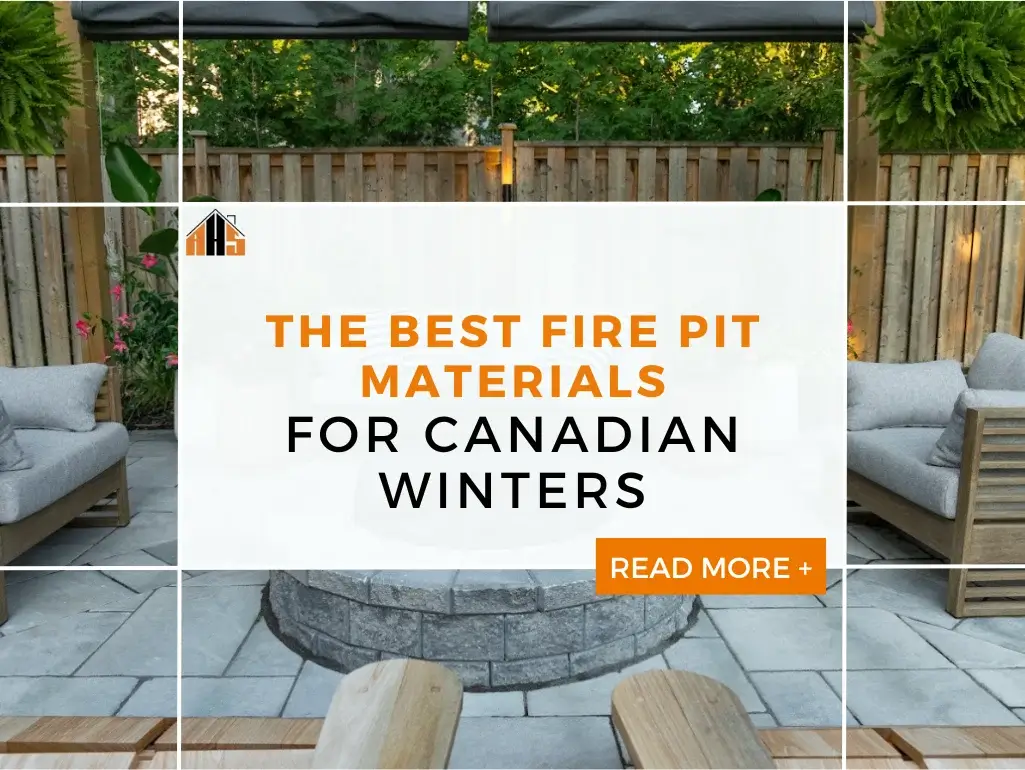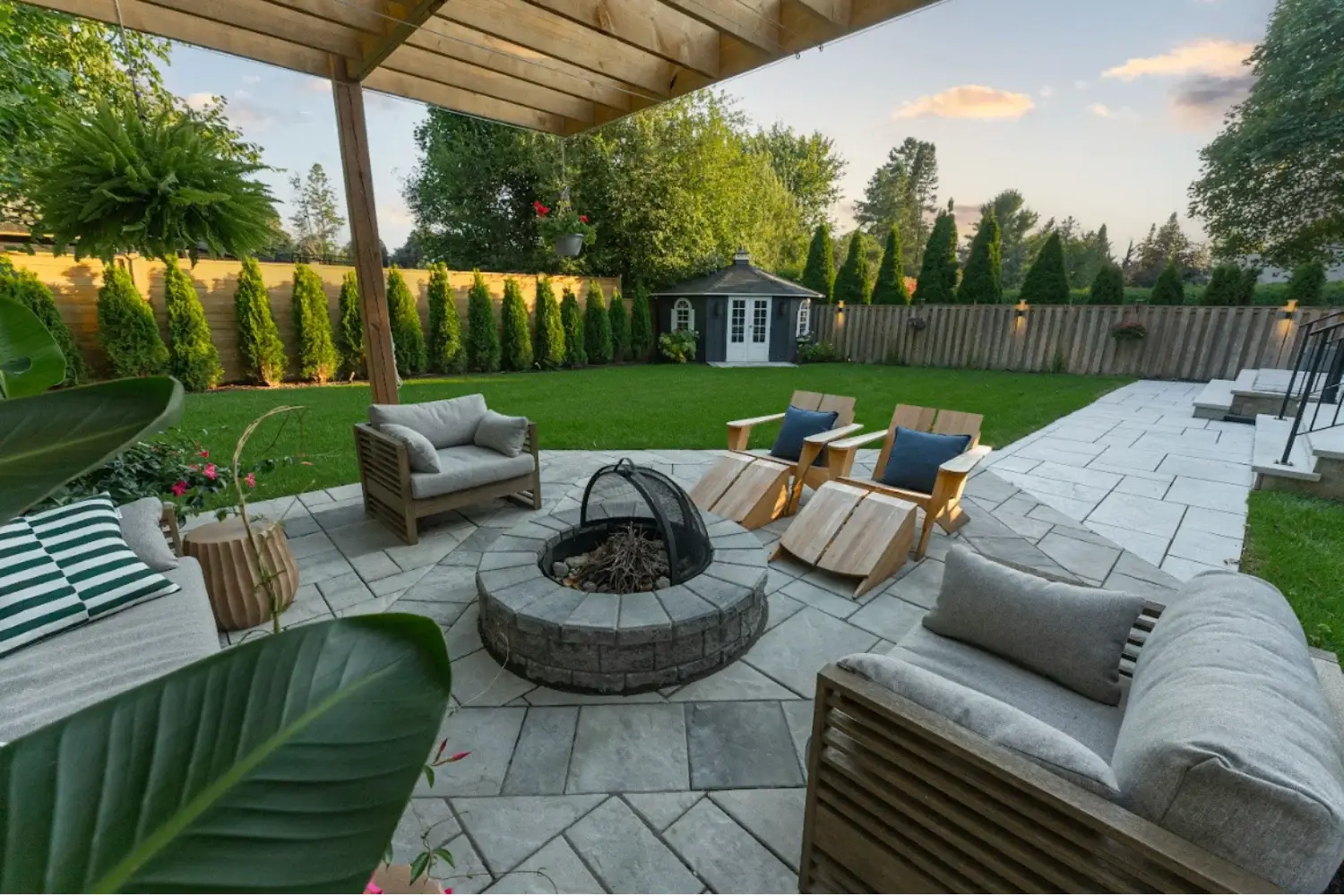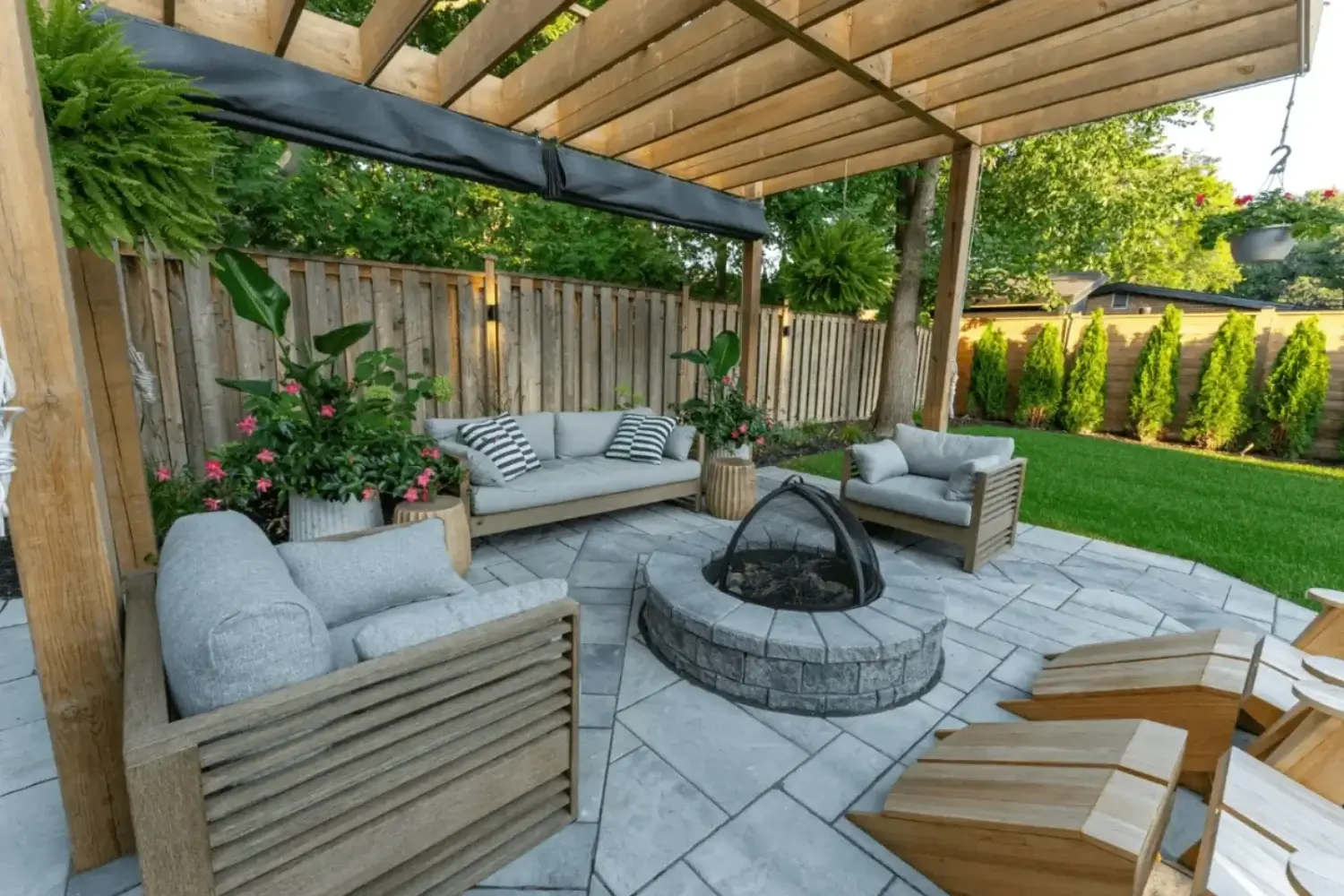
A fire pit is more than just a feature for your backyard. It serves as a place to share stories, a place to stay warm, and a means of extending outdoor living well past the summer. However, winter in Canada puts any outdoor structure to the test. When the snow, ice, and freezing temperatures arrive, materials that appear fantastic in the showroom may crumble, rust, or crack. Choosing the best fire pit materials for Canadian winters isn’t just about what looks nice right then, but also if it can stay that way after the relentless snowstorms.
Why Material Matters in a Canadian Winter
Canada is known for their freezing winters, that's why we're called the great white north. The constant freeze-thaw cycles put stress on every surface, and it gets worse when the moisture gets into small gaps, then expands when it freezes. A fire pit built with the wrong materials can warp, chip, or corrode after only one season. It doesn't matter how well it's built if you choose the wrong materials, since that's the literal building blocks for a fire pit that lasts.
Top Choices for Winter-Ready Fire Pits

When looking at the best fire pit materials for Canadian winters there's a few things we have to keep in mind. Yes appearances matter, but what's more important is how they can resist snow or moisture, and handle temperature swings.
1. Natural Stone
Natural stones not only look great, but are also one of the more reliable materials for a fire pit, with the big 3 being granite, limestone, and basalt. As long as they are installed and sealed properly, they're going to last years in the cold without even cracking. Granite is especially resilient because of its dense structure, which helps a lot against absorbing moisture. For a built-in fire pit that stays outside year-round, you can't go wrong with using natural stone, it's a classic choice that will stay looking good for years.
2. Concrete Block and Poured Concrete
Concrete is a popular pick because it’s versatile, affordable, and easy to shape. High-quality concrete blocks designed for outdoor use hold up well against freezing temperatures, especially when sealed to keep out moisture. Poured concrete fire pits are even stronger when reinforced properly. The key is to use a mix rated for cold climates and to avoid thin sections that might crack during a freeze-thaw cycle.
3. Stainless Steel
For a portable or above-ground fire pit, stainless steel is one of the best fire pit materials for Canadian winters. The reason for stainless steel over regular steel is that it handles rust and corrosion way better, even when exposed to melting snow and ice. Not only that but it also heats up quickly and spreads it out evenly, which mean less time sitting in the cold and waiting for it to get warm.
4. Brick (Fire-Rated)
Brick is a great choice too but you can't just use the same ones on the side of your home, it needs to be fire-rated. Only fire-rated brick, often called firebrick, are designed with handling fire in mind. When used with the right mortar, these guys will last you for many years to come before you start seeing any wear. Standard clay bricks or decorative bricks may look similar but will fail after a few strong freezes.
Materials to Avoid in Harsh Winters
While the material you're choosing for your firepit has to match your backyard aesthetics, it still needs to last through one winter. With that in mind, these are the ones you should avoid, unless you're fine with some costly replacements in the near future.
Regular Steel
Plain steel is affordable and easy to work with, but it rusts quickly when exposed to moisture and salt. Even if it has some sort of protective coating, the unforgiving snow, ice, and heat from the fire will wear it down quickly. Over time, rust weakens the structure and creates sharp edges that make the fire pit unsafe.
Low-Grade Concrete
While we did say concrete is great, just like brick, you need to make sure you're using the right one. Concrete that isn’t formulated for outdoor or cold-climate use will crack as water seeps in and freezes. If concrete is your choice, please make sure it's properly rated and high-quality, so you don't have any headaches later on.
Soft or Porous Stone
While natural stone is great, make sure you're not choosing stones that will absorb water easily, like sandstone or specific types of limestone. With these guys, once they absorb enough water, they start chipping, and it gets even worse when it freezes. This not only damages the look of the fire pit but can also create safety hazards around the fire area.
Ceramic or Glass Tiles
Tiles are a great stylistic choice, but they won't handle the hot flames in the freezing winters well. The heat of a fire followed by cold air can make it start to crack, or even split apart. Grout lines also absorb moisture and can deteriorate in a single winter.
Building for Longevity

Even the best fire pit materials for Canadian winters need to be built properly or else they'll fall apart as soon as it's done. Like everything in life, it all starts with a solid (literally) foundation. The base should be level, well-drained, and built with materials that won't shift during constant freeze-thaw cycles. Good drainage means water won't pool in your pit, which means you won't get rust and corrosion. Sealing stone or concrete surfaces adds an extra layer of protection, making it harder for moisture to be absorbed without sticking out. All of this needs professional experience, which is where we come in. Let our team of experts help you by professionally installing your fire pit safely and efficiently.
Regular upkeep is part of owning a fire pit in a cold climate. Ashes and debris should be cleaned out after each use, and covers help keep snow and ice from sitting directly on the surface. Stainless steel fire pits benefit from occasional polishing to maintain their resistance to corrosion.
Choosing the Right Fit for Your Space
The best fire pit materials for Canadian winters depend on the type of fire pit you’re building. A permanent, in-ground pit may benefit most from natural stone or firebrick, while a portable model will perform best with stainless steel. Budget, design preferences, and how often you plan to use the fire pit should guide the decision.
Wrapping It Up
A fire pit should bring comfort, not constant repairs. Picking the best fire pit materials for Canadian winters means you can't just look at the aesthetics, but also how it'll hold up in the freezing cold. Natural stone, stainless steel, fire-rated brick, and quality concrete are our go-to choices and will last years in your backyard. Avoiding weaker options like regular steel, soft stone, or decorative tiles will save time, money, and frustration in the long run.


